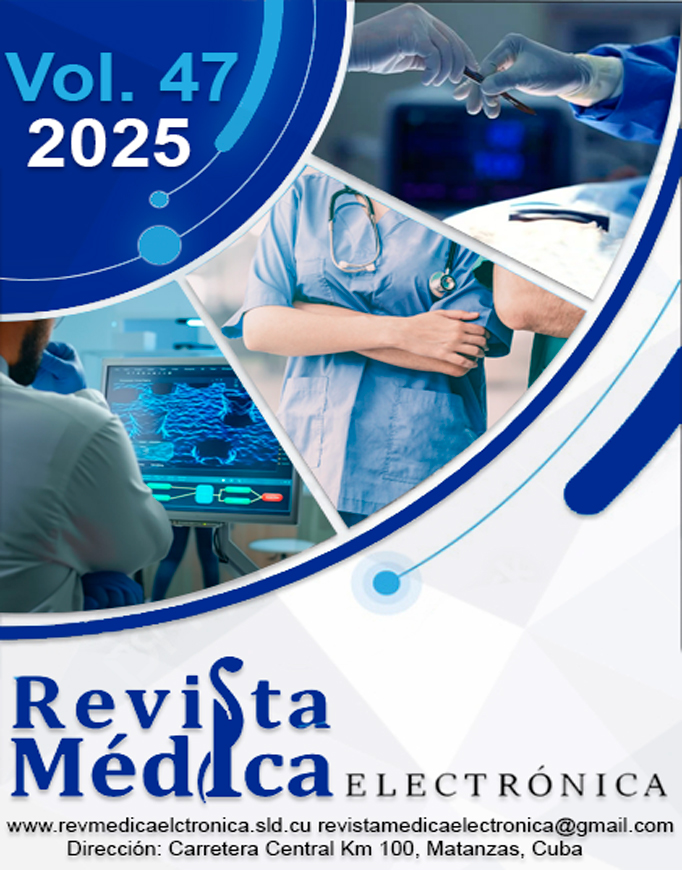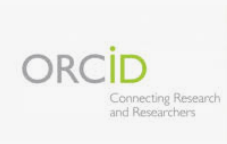Visibility with digital platforms: Effects on the inclusion of children with mild intellectual disability
Keywords:
digital visibility, digital platforms, inclusion, intellectual disabilityAbstract
Introduction: A visibility strategy with digital platforms seeks to promote social and educational inclusion of children with intellectual disabilities through the use of accessible digital tools.
Objective: To assess the effects on the inclusion of children with mild intellectual disabilities from the application of a strategy for digital visibility through digital platforms.
Methods: Mixed-approach research, which intervenes with a six-month strategy to favor learning, communication, and social participation of children (n=34) with mild intellectual disabilities in four intervention phases.
Results: On average, 12±3.5 children used digital platforms before the intervention; after the intervention, the average increased to 28±2.1 children. Regarding participation in online educational and social activities, each child participated in 3.2±1.1 digital activities; after the intervention, participation increased to 7.8±1.5. In terms of improvements in digital and communication skills, an initial qualitative assessment a score of 4.1±1.2 was reflected; in the post-test, the intervention reached a value of 7.9±1.0; (+92.7%). Significant differences were found in all indicators of success (p<0.05).
Conclusions: The intervention with digital platforms had a significant and positive impact on the inclusion of children with mild intellectual disabilities. An increase in accessibility, the use of digital tools, and participation in educational and social activities was observed, demonstrating that the strategy was effective in improving their integration in digital environments.
Downloads
References
1. Viera Gómez A, Cabrera PS, Duque Forero G, et al. Barreras y facilitadores en la inclusión digital de personas con discapacidad visual en la educación primaria en Uruguay: un estudio cualitativo con docentes. Univ Tarracon. 2024;2:e3666. DOI: 10.17345/ute.2024.3666.
2. Tsatsou P. Digital inclusion of people with disabilities: a qualitative study of intra-disability diversity in the digital realm. Behav Inf Technol. 2020;39(9):995-1010. DOI: 10.1080/0144929X.2019.1636136.
3. Rojo-Ramos J, Calero-Morales S, Gómez-Paniagua S, et al. Cyberbullying and self-concept in physical education school children. Espiral. 2024;17(35). DOI: 10.25115/ecp.v17i35.9506.
4. Gadea-Uribarri H, Lago-Fuentes C, Bores-Arce A, et al. External Load Evaluation in Elite Futsal: Influence of Match Results and Game Location with IMU Technology. J Funct Morphol Kinesiol. 2024;9(3):140. DOI: 10.3390/jfmk9030140.
5. Kaur H, Saukko P. Social access: role of digital media in social relations of young people with disabilities. New Media Soc. 2022;24(2):420-36. DOI: 10.1177/14614448211063177.
6. Starks AC, Reich SM. “What about special ed?”: Barriers and enablers for teaching with technology in special education. Comput Educ. 2023;193:104665. DOI: 10.1016/j.compedu.2022.104665.
7. Fernández-Batanero JM, Montenegro-Rueda M, Fernández-Cerero J, et al. Assistive technology for the inclusion of students with disabilities: a systematic review. Educ Technol Res Dev. 2022;70(5):1911-30. DOI: 10.1007/s11423-022-10127-7.
8. Sagarra Romero L, Ruidiaz Peña M, Monroy Antón A, et al. ithlete Heart Rate Variability app: knowing when to train. Br J Sports Med [Internet]. 2017 [citado 13/01/2025];51:1373-4. Disponible en: https://zaguan.unizar.es/record/63217/files/texto_completo.pdf
9. Arcila Rodríguez WO, Loaiza Zuluaga YE, Castaño Duque GA. Tendencias investigativas en los estudios sobre Alfabetización Mediática Informacional y Digital (AMID) en el campo educativo. Rev complut. 2022;33(2):225-36. DOI: 10.5209/rced.73935.
10. Sánchez MT. Pedagogía Ignaciana, Constructivismo Social de Vygotsky, Aprendizaje Servicio Solidario. Articulados teóricamente en pro de la responsabilidad social universitaria. Guayana Moderna [Internet]. 2020 [citado 13/01/2025];9(9):7-22. Disponible en: https://revistasenlinea.saber.ucab.edu.ve/index.php/guayanamoderna/article/view/5421
11. Rodríguez Torres ÁF, Naranjo Munive JE, Merino Alberca WV, et al. Adaptaciones curriculares en la enseñanza para alumnos con problemas respiratorios. Rev Cuba Med Gen Integr [Internet]. 2018 [citado 13/01/2025];33(4). Disponible en: https://revmgi.sld.cu/index.php/mgi/article/view/717
12. Hofmann M, Kasnitz D, Mankoff J, et al. Living disability theory: Reflections on access, research, and design. En: Guerreiro T. Proceedings of the 22nd International ACM SIGACCESS Conference on Computers and Accessibility. New York: Association for Computing Machinery; 2020. DOI: 10.1145/3373625.3416996.
13. Fuentes Avila X, Damián Núñez EF, Carreño Colchado MM. Revisión teórica del modelo social de discapacidad. Propós Represent. 2021;9:e898. DOI: 10.20511/pyr2021.v9nSPE1.898.
14. Ramos-Vega D. TikTok challenge: Escuelas filosóficas. Una experiencia de aprendizaje autodirigido desde la heutagogía y el conectivismo. Documentos Trab Areandina [Internet]. 2020 [citado 13/01/2025];(2). Disponible en: https://revia.areandina.edu.co/index.php/DT/article/view/1728
15. Heredia Heredia LJ, Guamán Naranjo VA, Vélez Sarmiento WJ, et al. Diseño Universal para el Aprendizaje, entre la teoría y la práctica. Franz Tamayo Rev Educ. 2023;5(13):162-77. DOI: 10.61287/revistafranztamayo.v.5i13.8.
16. Goggin G, Ellis K. Privacy and Digital Data of Children with Disabilities: Scenes from Social Media Sharenting. Media Commun. 2020;8(4):218-28. DOI: 10.17645/mac.v8i4.3350.
17. Reyes JI, Meneses J, Melian E. A systematic review of academic interventions for students with disabilities in Online Higher Education. Eur J Spec Needs Educ. 2022;37(4):569-86. DOI: 10.1080/08856257.2021.1911525.
18. Habib H, Jelani SA, Najla S. Revolutionizing Inclusion: AI in Adaptive Learning for Students with Disabilities. Multidiscip Sci [Internet]. 2022 [citado 13/01/2025];1(1):1-11. Disponible en: https://www.neliti.com/publications/590978/revolutionizing-inclusion-ai-in-adaptive-learning-for-students-with-disabilities
19. Carranza Gangotena DF, García Pascal OD, Pascal Taicus WF, et al. Causas y efectos del abandono escolar en escuelas de la amazonia ecuatoriana. InnDev. 2023;2(2):67-74. DOI: 10.69583/inndev.v2n2.2023.63.
20. Bravo González AP, Córdova Granda JM, Ramón Merchán ME. La inclusión en la enseñanza superior de las personas discapacitadas en la legislación ecuatoriana. Conrado [Internet]. 2020 [citado 13/01/2025];16(73):327-34. Disponible en: http://scielo.sld.cu/scielo.php?pid=S1990-86442020000200327&script=sci_arttext
21. Calero Morales S, Garzón Duque BA, Chávez Cevallos E. La corrección-compensación en niños sordociegos con alteraciones motrices a través de actividades físicas adaptadas. Rev Cubana Salud Pública [Internet]. 2019 [citado 14/01/2025];45(4). Disponible en: http://scielo.sld.cu/scielo.php?script=sci_arttext&pid=S0864-34662019000400004
22. Game Mendoza KM, Vinueza Burgos GdC, Icaza Rivera DP, et al. Efectos de las estrategias colaborativas en el proceso académico de enseñanza-aprendizaje de voleibolistas prejuveniles. Retos. 2024;61:1172-83. DOI: 10.47197/retos.v61.109363.
23. Calero-Morales S, Vinueza-Burgos GdC, Yance-Carvajal CL, et al. Gross motor development in preschoolers through conductivist and contructivist physical-recreational activities: Comparative research. Sports. 2023;11(3):61. DOI: 10.3390/sports11030061.
24. Rodríguez Torres ÁF, Páez Granja RE, Altamirano Vaca EJ, et al. Nuevas perspectivas educativas orientadas a la promoción de la salud. Educ Méd Super [Internet]. 2018 [citado 14/01/2025];31(4). Disponible en: https://ems.sld.cu/index.php/ems/article/view/1366
25. Ayuso-Mateos JL, Nieto-Moreno M, Sánchez-Moreno J, et al. Clasificación Internacional del Funcionamiento, la Discapacidad y la Salud (CIF): aplicabilidad y utilidad en la práctica clínica. Med Clin (Barc) [Internet]. 2006 [citado 14/01/2025];126(12):461-6. Disponible en: http://sid.usal.es/idocs/F8/ART13069/clasificacion_internacional_del_funcionamiento.pdf
26. Freire Mora MA, Orellana Len VA, Cabrera Tejada JP, et al. Estrategias para fomentar la participación activa y el compromiso de los estudiantes en cursos en línea. Cienc lat. 2024;8(4):2879-91. DOI: 10.37811/cl_rcm.v8i4.12537.
27. Armas-Alba L, Alonso-Rodríguez I. Las TIC y competencia digital en la respuesta a las necesidades educativas especiales durante la pandemia: Una revisión sistemática. RIPIE. 2022;2(1):11-48. DOI: 10.51660/ripie.v2i1.58.
28. Svensson I, Nordström T, Lindeblad E, et al. Effects of assistive technology for students with reading and writing disabilities. Disabil Rehabil: Assist Technol. 2021;16(2):196-208. DOI: 10.1080/17483107.2019.1646821.
29. Caprara L, Caprara C. Effects of virtual learning environments: A scoping review of literature. Educ Inf Technol. 2022;27(3):3683-722. DOI: 10.1007/s10639-021-10768-w.
Downloads
Published
How to Cite
Issue
Section
License
Copyright (c) 2025 Rita Maricela Plúas-Salazar, Germánico Renee Tovar-Arcos, Marylin Figueroa-Cruz, Leónidas Fidel Castelo-Barreno

This work is licensed under a Creative Commons Attribution-NonCommercial 4.0 International License.
All content published in this journal is Open Access, distributed under the terms of the CC BY-NC 4.0 License.
It allows:
- Copy and redistribute published material in any medium or format.
- Adapt the content.
This will be done under the following terms:
- Attribute the authors' credits and indicate whether changes were made, in which case it must be in a reasonable way.
- Non-commercial use.
- Recognize the journal where it is published.
The copyrights of each article are maintained, without restrictions.






